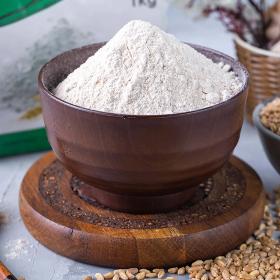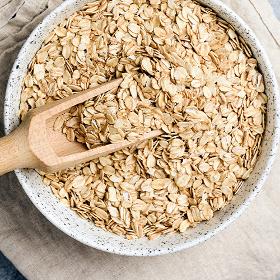- europages
- >
- COMPANIES - SUPPLIERS - SERVICE PROVIDERS
- >
- cereals
Results for
Cereals - Import export

VEHGRO B.V
Germany
"What are chickpeas? The chickpea is also called garbanzo bean. The chickpea is very popular, particularly around the Mediterranean, where it is used in various dishes. It is a legume which has been cultivated in Anatolia for more than 8,000 years. Many Anatolian dishes can be made with chickpea flour such as humus, falafel, chips and Chips. Today, many chickpeas are still grown in Turkey, but now 70% of the world production is in the hands of India. How healthy are chickpeas? Chickpeas are high in protein, fiber and minerals and cause less flatulence than other beans. Chickpeas are high in fibre, which not only makes you feel satiated, but also stimulates your digestion. Because of the amount of dietary fiber, chickpeas can also lower your cholesterol. Chickpeas also contain vitamin E. Vitamin E has a cell protecting function and is known as a natural anti-aging agent. What can you do with chickpea powder? Because of the protein and fiber,…"
Request for a quote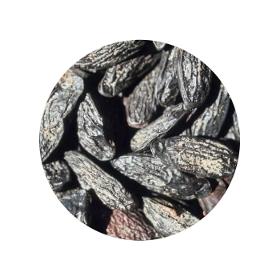
VEHGRO B.V
Germany
"Tonka beans (Dipteryx odorata) Tonkabones grow on a Tonka tree and are the seeds of the fruit that these trees carry. Tonka beans are narrow, black, elongated and wrinkled beans with a brown interior. Once harvested, the seeds are dried and soaked 24 hours a day in alcohol or rum. Tonka beans soaked in rum give a taste of vanilla, almond and rum. This makes them a perfect seasoning for desserts and pastries. After the addition of alcohol, the beans are dried again and a fermentation process takes place. Tonkabones are a widely used ingredient in desserts, the garnishing of desserts (ganache), caramel confectionery, ice cream or patisserie."
Request for a quote
VEHGRO B.V
Germany
"Premium Corn Starch Organic Corn Starch Organic from VehGro is an organic certified product of premium quality. Thanks to this certificate, you know that what you buy has been created with an eye and care for people and nature. VehGro stands for products that are healthy and of the highest quality. The (organic) natural products we have selected come from various regions of the world. All products are checked in Europe and often also packaged there. The Organic mark stands for 100% controlled organic and reliable. These ingredients are guaranteed to be free of all sorts of additives such as sugars and fats and meet all European requirements with regard to pesticides. Looking for a wholesaler or importer of Corn Starch Organic? We offer a range of thousands of organic ingredients that we can offer both as single ingredients or in a mix. If you are interested in our private label concept, please check www.vehgroshop.com/private-label."
Request for a quote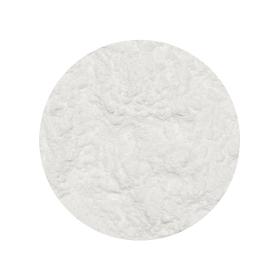
VEHGRO B.V
Germany
"Where does tapioca come from? Tapioca is a tasteless and starchy ingredient and comes from the root of the Manioc plant (Cassava plant, Yucca plant). It is a shrub that can grow between 2 and 5 metres tall. The plant originally comes from South America but was spread around the world by European explorers. Today, the plant is grown mainly in Brazil, Thailand, Indonesia, Zaire and Nigeria. Tapioca applications Tapioca flour is used as a thickener in food (in soups and sauces), medicine (tablets) and animal feed, but is also an important ingredient of prawn crackers."
Request for a quote
VEHGRO B.V
Germany
"Origin and history of black beans The black bean is widely used in Mexican cuisine. Often as a substitute for the normal brown bean. With its black colour, meaty texture and size (smaller than the brown bean) it is a special appearance. The taste is mushroom-like. Healthy properties Black beans and applications The black bean is packed with magnesium, thiamin, folic acid, B vitamins, antioxidants (anthocyanins), protein and fiber. Its high protein and fibre content makes it an excellent meat substitute with the great advantage of evenly distributing carbohydrates. The black bean can be processed well in vegetarian dishes, soup or as a replacement for the brown bean."
Request for a quote
VEHGRO B.V
Germany
"Origin Mung beans Mung beans are unknown to many people, have been used for thousands of years in India and China, and yet almost everyone has come into contact with them at some point. Production process Mung beans Bean sprouts are the germ of what will eventually grow into a plant with pods (filled with mung beans). Not only bean sprouts is the way you came into contact with the Mung beans. Food items such as glass noodles are made from the bean. They are easily digestible but also super nutritious. Healthy properties Mung beans Mung beans are high in protein, protein and fiber, but few calories. The beans are rich in potassium (good for heart and blood vessels), folic acid, vitamin B and minerals."
Request for a quote
VEHGRO B.V
Germany
"Origin Of Tonka beans Tonka beans (Dipteryx odorata) Tonka beans grow on a Tonka tree and are the seeds of fruit that these trees bear. Tonka beans are narrow, black elongated and wrinkled beans with a brown inside. Production process Tonka beans After the seeds have been harvested, they are dried and soaked in alcohol or rum for a day. Tonka beans soaked in rum give a taste of vanilla, almond and rum. That makes them a perfect seasoning of desserts and patisserie. After adding the alcohol, the beans are dried again and a fermentation process takes place. Tonka beans applications Tonka beans are a common ingredient of desserts, the garnish of desserts (ganache), caramel sugar, ice cream or patisserie."
Request for a quote
VEHGRO B.V
Germany
"Flakes of oat In order to make oat flakes, the whole grain is used. So including the bran and germ and not just the starch part of the grain. Oat flakes are therefore always whole grain. Oat flakes are easier and quicker to prepare than the whole grain of oats. As well as being easier to digest. Important reasons why oat flakes are so popular. Benefits of Oat Flakes Oat flakes provide your body with a lot of vitamins. they give you the strength you need to get through the day and satiate your appetite. Oat flakes has many other benefits: they are cholesterol-lowering, a source of antioxidants, provide your body with a lot of energy and they are diuretic. This nutritious oats is delicious in the yogurt, for example, as breakfast. It supports good tooth and bone formation and is also easily digestible."
Request for a quote
VEHGRO B.V
Germany
"Flakes of oat In order to make oat flakes, the whole grain is used. So including the bran and germ and not just the starch part of the grain. Oat flakes are therefore always whole grain. Oat flakes are easier and quicker to prepare than the whole grain of oats. As well as being easier to digest. Important reasons why oat flakes are so popular. Benefits of Oat Flakes Oat flakes provide your body with a lot of vitamins. they give you the strength you need to get through the day and satiate your appetite. Oat flakes has many other benefits: they are cholesterol-lowering, a source of antioxidants, provide your body with a lot of energy and they are diuretic. This nutritious oats is delicious in the yogurt, for example, as breakfast. It supports good tooth and bone formation and is also easily digestible."
Request for a quote
VEHGRO B.V
Germany
"Origin Red Kidney beans Red kidney beans get their name from their kidney-like shape and color. Production process Red Kidney beans Red kidney beans are picked by hand and checked for quality at 3 different points in the production process. The red kidney beans are given a thorough cleaning immediately after harvest. Any stones will be removed. After that, the beans are selected by size and then polished. Healthy properties Red Kidney beans and applications Red kidney beans are very nutritious because they are full of protein, vitamins, minerals and fiber. They are a good meat substitute and are also very popular among athletes. In addition, this red kidney bean gives long-lasting energy and a full feeling. Red kidney beans can be eaten both hot and cold. You use them in stews, with tacos, in salads, in soup or with pasta dishes."
Request for a quote
VEHGRO B.V
Germany
"The difference between Oat Bran, Oat Flakes, Oatmeal and Oatflour The difference lies in the degree of processing of oats. Oat bran is made from the outer layer of the oat kernel. Oat flakes are flattened oat grains, oatmeal are halved oat flakes and oat flour is the oat grain ground into powder. Oatflour is Gluten free and good substitute for wheat flour. Although equal in terms of applicability, the main advantage of oat flour over wheat flour is that it is gluten free and very healthy. Healthy properties Oatmeal Gluten Free Oatflour contains a lot of protein and fat, more even than other grains. It also contains antioxidants and good minerals such as iron, magnesium and zinc and lots of vitamin B1. Oat fibres can lower the cholesterol in your blood. Oats also contain some oil, which consists of 80% unsaturated fatty acids."
Request for a quote
VEHGRO B.V
Germany
"What is oatmeal? Oatmeal is dried and ground oats. It is full of carbohydrates and therefore energy. It is widely used as feed (horses) and as a raw material for porridge, bread, cakes, muesli and granola. How is oatmeal made? To make oatmeal the whole grain is used. So including bran and germ and not just the starch portion of the grain. Oatmeal is therefore always whole grain. Healthy properties Oatmeal Oatmeal contains many carbohydrates and are therefore a good source of energy for athletes. Oats also contain a lot of manganese. Oats are known for their cholesterol-lowering effect. Finally, oats are the only known type of cereal that contains protein. The quality of this Avenalin protein is comparable to that of soya."
Request for a quote
VEHGRO B.V
Germany
"What is Quinoa? Quinoa (Chenopodium quinoa) Flour consists of ground quinoa seeds. Quinoa seed is a grain from the Andes mountains in South America, which contains more protein, dietary fibre, B vitamins and dietary minerals than many other grains. It was used as animal feed for many thousands of years and for human consumption for some 4,000 years. Nutrients Quinoa Quinoa is rich in the following nutritional values: protein, dietary fiber, several B vitamins, magnesium, phosphorus and manganese. Versatile Quinoa flour can be used in many different dishes. It is ideal for baking bread, cakes and other tasty baked goods. Make the batter for cakes, waffles and pancakes, for example. When baking or cooking with quinoa flour you often use a shorter baking or cooking time and a lower temperature."
Request for a quote
VEHGRO B.V
Germany
"Origin and history of chickpeas The chickpea is also known as the garbanzo bean. The chickpea is very popular, especially around the Mediterranean, where it is used in various dishes. Many Anatolian dishes can be made with chickpeas such as humus, falafel, chips and Chips. Today there are still many chickpeas grown in Turkey, but 70% of the world production is in the hands of India. Chickpea cultivation The peas are picked when the pods crack and then laid out to dry. If there is a chance of rain, chickpeas are brought into a ventilated room to complete the drying process Healthy properties Chickpeas and uses Chickpeas are high in protein, fiber and minerals and cause less flatulence than other beans. They have a slight sweet taste. Chickpeas are known as the main ingredient in Hummus and Falafel but can also serve as a vegetable with a hot meal or as a base in a salad. In India, it is often used in curry"
Request for a quoteDo you sell or make similar products?
Sign up to europages and have your products listed

VEHGRO B.V
Germany
"Cassava Origin and History Cassava or manioc is the edible tuber of Manihot esculenta, a woody perennial shrub. Cassava is commonly eaten in Africa and South America. The plant originated in Brazil. All currently cultivated plants are cultivars. Cassava can grow on very poor soils and can also withstand dry periods. In addition, the plant is resistant to grasshopper plagues. From archaeological findings of tools used for scraping the tubers, it appears that cassava was cultivated in Brazil and Venezuela as early as 3000 BC. Production process Cassava Flour Cassava flour is a fine-grained dehydrated powder rich in fiber and starch obtained by crushing cassava roots, which are pressed and dried. Use Cassava Flour Cassava flour is very useful for making gluten-free recipes. In addition, cassava flour is useful for baking for a bread-like result. It can be used for both sweet and savory dishes such as biscuits, pizza crusts or pancakes."
Request for a quote
VEHGRO B.V
Germany
"Rice Rice is a cultivated crop. This means that it is a plant species that was grown for human use and is bred from wild plants. Rice (Oryza) is a cereal, of which China is the largest producer and consumer and Thailand the largest exporter. Rice grows as a branched plume. The panicle contains between 50 and 500 spikes, each containing a flower. The ovary and later the grains are enclosed by calyxes. The growing process of rice takes on average between 3 and 6 months. History of rice The origin of rice is in Asia. About 9000 years ago people started growing rice in the tropics. The rice grains were discovered in the village of Shangshan. The cultivation of crops enabled people to live in one place. Rice was found in Shangsan in jars and stones, along with tools to grind the rice. Rice was not eaten more frequently in Europe until the 15th century, this was due to the voyages of discovery to Asia. Use Rice flour is ground and uncooke…"
Request for a quote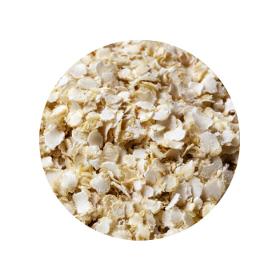
VEHGRO B.V
Germany
"History and Origin of Quinoa Quinoa (Chenopodium quinoa) is native to South America and has been grown as the main food crop since 6000 years ago. Quinoa was already used by the Incas as a field product. The plant is able to grow under cold, nutrient-poor and dry conditions. The growth period is about 5-6 months. Through crossbreeding, quinoa varieties have been created which can grow in European and North American conditions. In the first half of April the quinoa is sown in Europe and the harvest takes place from mid-September. Production Process Quinoa Flakes After harvest, the quinoa is first cleaned. Then the quinoa is washed to remove the saponin. Then it is dried and the best pieces will be selected by hand. These pieces are soaked to flatten the quinoa. After drying, the quinoa is sieved and then processed into quinoa flakes. Healthy properties Quinoa Flakes <Quinoa flakes are rich in vitamins B2, E, iron, copper and magnesium. Quino…"
Request for a quote
VEHGRO B.V
Germany
"A Little History of Rice Rice is the most important food for the people of Asia. It has been grown and cultivated for 13,000 years. China grows the most rice, but Thailand is the largest exporter of rice, followed by Vietnam. Rice is a cereal and there are roughly two types: Japonica rice (sticky and short) and Indica rice (dry and long). Of each type, rice types exist with different colours, white, brown, black and red. Only white rice differs from the rest, because white rice is a further processed version of one of the other colours. When producing white rice, not only is the outer husk removed, but also the fibre layer and the germ. In the production of all other colours of rice, the fibre layer and the germ are retained. These types of rice are therefore called brown rice. Rice flour from brown rice This rice flour is made from a brown rice. The outer husk is removed and then the grain including fiber and germ ground into flour. What nutrients does …"
Request for a quote
VEHGRO B.V
Germany
"Origin of Buckwheat Buckwheat flakes come from the buckwheat (Fagopyrum esculentum), a plant that flourishes in countries around the world. Buckwheat has white to pink flowers. Buckwheat can be used for breakfast, is suitable for baking biscuits, contains many carbohydrates and is easy to digest. It is thought that buckwheat has its origins in China and there was first grown around 1000 BC. In the 15th century Europe was also acquainted with buckwheat. For more information on this product, please refer to the following page: Article Buckwheat Processing Buckwheat Flakes The hulled seeds of the buckwheat plant are first well washed and placed on trays. Then the seeds germinate under controlled temperature and humidity for 24 to 48 hours, or until the germ is fully developed. These developed germs are moved to different trays and dried at …"
Request for a quote
SCHAAF TECHNOLOGIE GMBH
Germany
Innovative shapes combined with taste and nutrition With increasing consciousness about healthy eating, cereals, especially extruded cereals, are becoming a standard feature in many households. “Rice-crispies”, “Fruit rings”, “cocoa cereal flakes” are some of the more common extruded cereals. A cereal like product in single piece bite size positioned for consumption alone and as a snack is a sweet snack. Raw-materials: Unlike many single cereal based conventional products, extrusion can be used to produce multi-cereal products with better nutritional balance. Similarly special nutritional requirements of specific group of consumers can be met through suitable selection of the raw-materials. Extruded products can be made in attractive shapes to increase their acceptability among children and introduce the concept of health with fun. Process: Production of cereals is usually a multi-stage process.
Request for a quote
FRIGORTEC GMBH
Germany
Using the DEBUGGER method (heat treatment) from FrigorTec, the DEBUGGER DB18 has proven its effectiveness in killing insects, larva, and eggs, for decades. This method increases the air temperature to a range between 45°C and 60°C, and keeps it there, so that pests die off without using chemical substances, thus preventing damage to buildings and their fittings. A power distributor is required depending on the size of the installation site or the number of devices, and we recommend using one or more SCRAMBLER SC 6000s to save energy. Fields of application > Specially developed for large spaces, e.g., mills, bakeries, the food-processing industry > Often used in spice and coffee processing, as well as in the tobacco industry, muesli manufacture, and small animal feed production > Combine several DEBUGGER DB18s in very large rooms and halls
Request for a quote
FRIGORTEC GMBH
Germany
The ventilation dryers of the GRANIVENT™ series are the ideal supplement to GRANIFRIGOR™ grain dryers. They are used to aerate the grain immediately after harvesting. Subsequent cooling with a GRANIFRIGOR™ ensures that the grain is not damaged by insects or fungi. Fields of application > Optimal grain protection against warm or humid air > Standard medium pressure version - also ideal for tower silos
Request for a quote
FRIGORTEC GMBH
Germany
The special grain cooling units for hot dry countries of the GRANIFRIGOR™ Desert series are performance- and energy consumption-optimised for hot desert climates. Fields of application > Reliable grain cooling in very hot countries - Safe control of air humidity due to HYGROMAT™ automatic > Complete suitability and reliable operation even at extremely high outside temperatures due to safety refrigerants > Standard medium-pressure version - also ideal for tower silos > Storage sizes from 12,000 t up to 25,000 t
Request for a quote
FRIGORTEC GMBH
Germany
The GRANIFRIGOR™ Europe range of grain cooling units are performance- and energy consumption-optimised for the temperature and humidity of European temperate conditions. Fields of application > Reliable grain cooling in temperate climates (rain, fog, heat and cold) - assured control of air humidity due to HYGROMAT™ automatic > Complete suitability and reliable operation even at high ambient temperatures due to safe refrigerants > Standard medium pressure version - ideal for tower silos too > Storage sizes from 1,300 up to 25,000 tons
Request for a quote
FRIGORTEC GMBH
Germany
The GRANIFRIGOR™ Tropic grain cooling units are performance- and energy consumption- optimised for the temperature and humidity of the tropical climate. Fields of application > Reliable grain cooling in tropical climates (heat, high humidity, monsoons and fog) - Secure control of air humidity due to HYGROMAT™ automatic > Complete suitability and reliable operation even at very high outside temperatures due to safety refrigerants > Standard medium pressure version - also ideal for tower silos > > Storage sizes from 2,100 up to 35,000 tons
Request for a quote
FRIGORTEC GMBH
Germany
The GRANIFRIGOR™ Subtropic grain cooling units are performance- and energy consumption-optimised for the temperature and humidity of the subtropical climate with tropical summers and non-tropical winters. Fields of application > Reliable grain cooling in warm temperate climates (rain, fog, sultry, heat and cold) - secure control of air humidity due to HYGROMAT™ automatic > Complete suitability and reliable operation even at very high outside temperatures due to safety refrigerants > Standard medium pressure version - ideal also for tower silos > Storage sizes from 8,200 up to 25,000 tons
Request for a quoteResults for
Cereals - Import exportNumber of results
47 ProductsCountries
Company type
